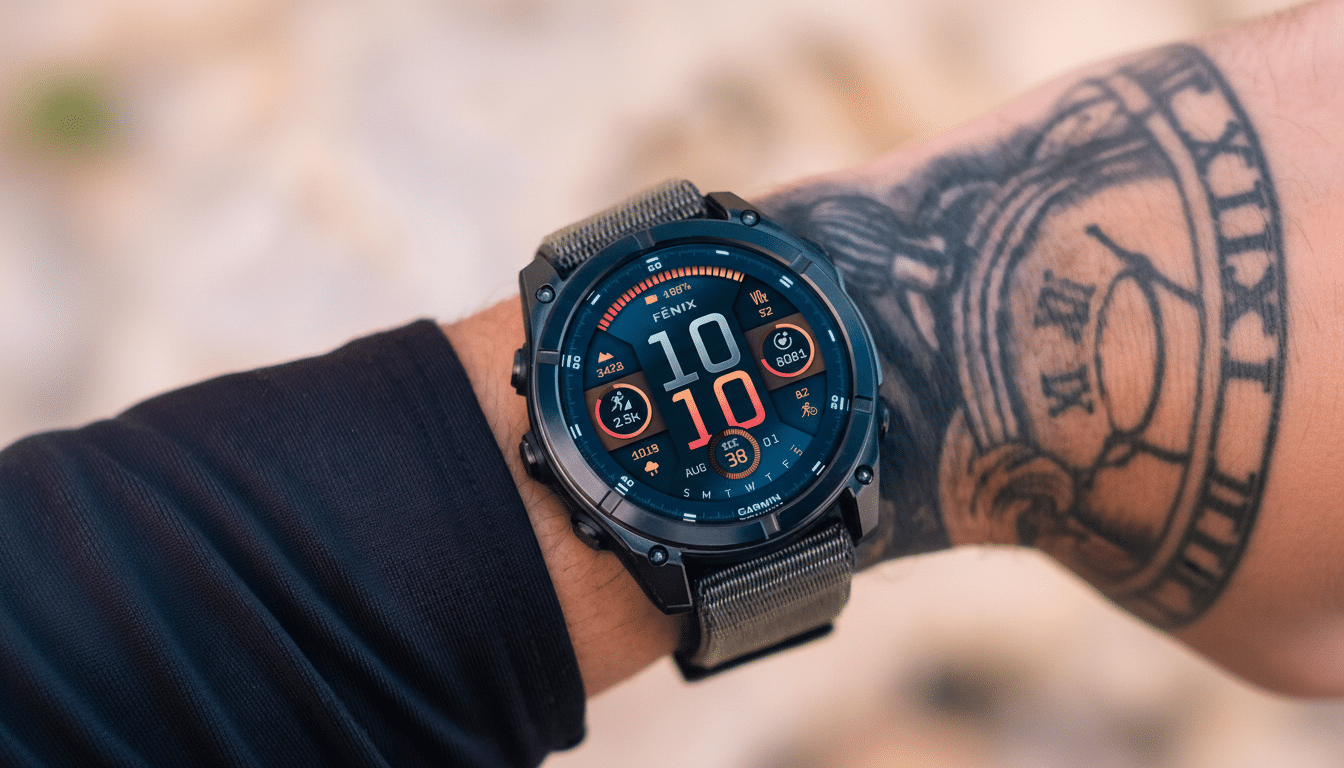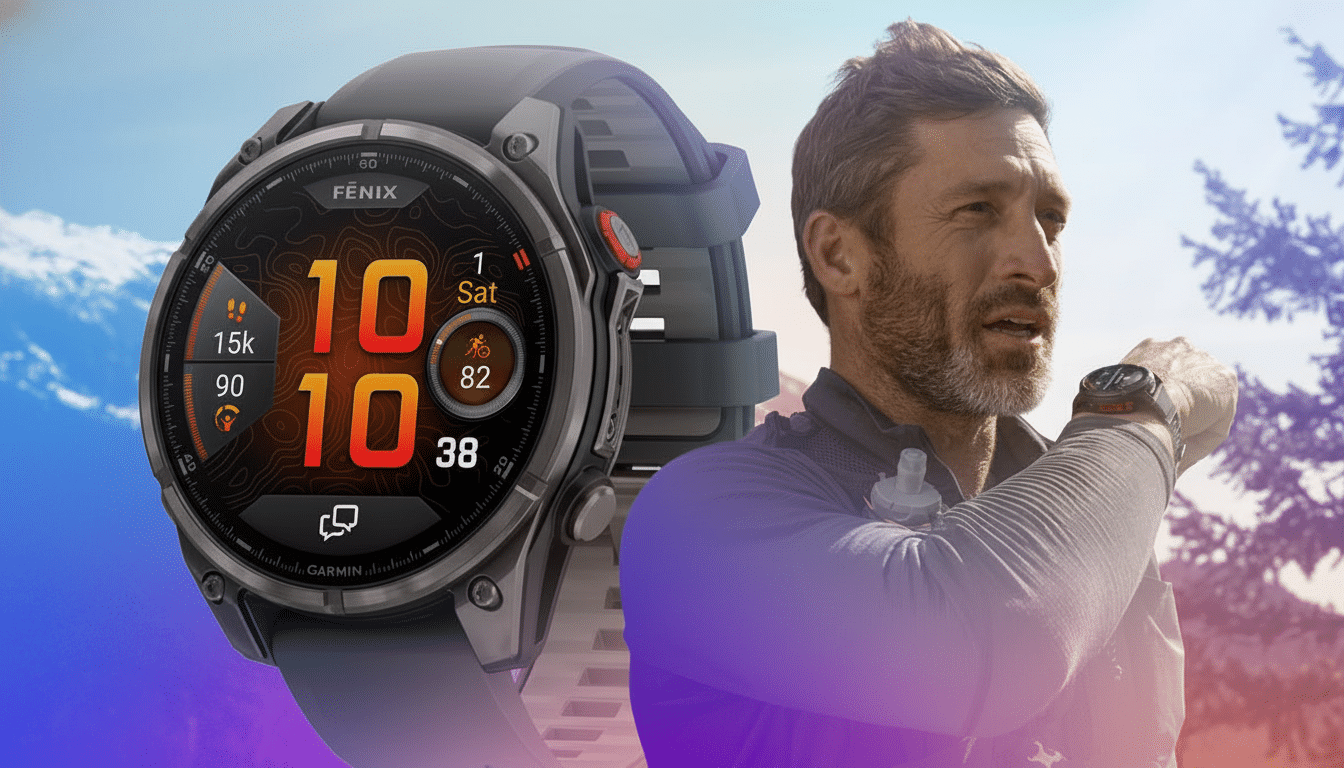Garmin has thrown down the gauntlet in the race to get real satellite connectivity on your wrist, announcing the Fenix 8 Pro with an inReach and LTE capability built in – just days before Apple is due to reveal similar functionality for its next rugged smartwatch. It’s a bold move that moves satellite messaging from a phone-based lifeline to standalone feature for the outdoor athlete and remote worker.
A Wrist-First Look at Satellite Messaging
The Fenix 8 Pro is also the first Garmin watch to house inReach, the company’s long-running satellite platform that runs on the Iridium low-Earth-orbit constellation. That will let users send check-ins and two-way texts using the Garmin Messenger app even when far from the reach of cellular coverage, as well as also placing SOS calls for help that route to Garmin’s 24/7 Response coordination center.

Garmin says its Response team has worked 17,000 inReach incident cases in 150+ countries — a data point that highlights the number and maturity of this emergency hotline. And Iridium, with its truly global reach, including polar regions, could find favor with travel adventurers who can’t rely on terrestrial networks.
The watch is the endpoint now, rather than a phone-as-hub thing. That comes in handy when your smartphone is dead, broken or sitting in base camp. LTE is onboard as well for calls, 30-second voice messages, LiveTrack links and weather (for areas with coverage) — thus establishing a continuum from cellular to satellite as opposed to a hard handoff.
What Sets inReach Apart
Of course, there’s a catch: Service isn’t free. Garmin offers satellite plans ranging from $7.99 a month, with tiered fees for tracking intervals, message allowances and professional features. That’s in contrast to Apple’s present policy on iPhone, where Emergency SOS over satellite has been free of charge until now. It’s an adoption case perhaps shaped by pricing difference—but inReach has proven coverage and established workflows leveraged by guides, search teams, and long-haul sailors.
The SOS flow is still a differentiator. You push the dedicated trigger and your Garmin Response contacts the players, the player’s emergency contacts and local authorities to optimize rescue. That human-in-the-loop model is value enough to pay for many backcountry users a subscription to it.
Hardware: Brightness, Toughness and the Hard Choices
Garmin is combining the satellite gain with a display leap. One microLED model hits a claimed 4,500 nits of brightness, which the company claims is the brightest full smartwatch screen to date—helpful for navigating in full sun, or reading mission-critical prompts amid the glare of snow. There is also an AMOLED option for those who value battery life over brightness.
The watch is designed to be abused: dive-rated and leakproof metal buttons, a metal sensor guard and an integrated LED flashlight for night runs and campsite duties. Inside, you get Garmin’s full training and health stack, too, and that means endurance and hill scores, ECG, sleep coaching and daily workout tips. It’s a multisport tool, which now comes with a safety lifeline.

There are two case sizes, 47 millimeters and 51 millimeters. The AMOLED versions begin at $1,200 and are good for up to 27 days in smartwatch mode. The 51mm microLED model is priced at $2,000 and can last up to 10 days. That battery split may seem counterintuitive at first glance — microLED is usually efficient — but Garmin is clearly tuning for extreme brightness and readability, which takes its toll on power. Usable real-world endurance will also be a function of the satellite check-in frequency, LTE use and GPS sampling.
What This Means for Apple and the Wearables Market
Apple has been the clear leader in the shipments of smartwatches for some time now, say industry watchers such as Counterpoint Research and IDC, while Garmin has been a leader in high-ASP, performance-oriented wearables. Satellite messaging is where those worlds collide: On one side, there’s mass-market polish; on the other, field reliability and expedition-grade safety. Should Apple introduce built-in satellite capabilities into its high-end watch, expect a race to the bottom when it comes to usability — speed of messaging, cleanliness of interface and how the emergency workflow works will become more important than raw specs.
Network choice will be pivotal. Garmin’s inReach uses Iridium for global coverage, which is a great plus if your adventures take you well to the north or south of the equator. Apple’s satellite services on iPhone rely on the Globalstar network, and any watch solution would have to accommodate antenna space, battery life and the line-of-sight limitations of a smaller device. Like 3GPP’s NTN standards and regulators’ satellite-to-device rules, the feature set needs to move beyond plain text to richer data — inside stringent power budgets.
Early Questions and Who Should Buy
Prospective buyers should consider three things: the costs for a subscription, the level of coverage needed, and the training features that the software provider has developed. If you’re spending enough time away from cell coverage where you would really benefit from a satellite booster, for alpine routes and bluewater passages and desert trails, the Fenix 8 Pro’s satellite-first design, and Garmin’s Response infrastructure, are exciting. If you are primarily suburban and are deep enough in the Apple ecosystem, waiting to see just how deeply satellite becomes integrated into Apple’s watch software and services might make sense.
One of those is the performance of the antenna on the wrist. Satellite messaging generally works best with a line of sight to the sky, so I’d expect Garmin to guide users through orienting the watch for best results with connectivity, much like your iPhone does when you enable Emergency SOS. Latency can depend on sky conditions and message volume, so it’s a safety system, not a streaming pipe.
How ever the competitive narrative shakes out, Garmin has raised the bar on the sort of performance we can expect from premium wearables. A training watch that can call for help from the middle of nowhere is no longer a concept — it’s a product that sits on the shelf. The next chapter will be about execution — reliability in tough conditions, transparent pricing, and an effortless user experience when it matters most.

